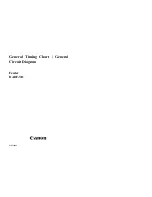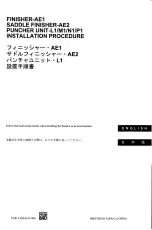
9
Do not use welding filters that are cracked, pitted or otherwise damaged as these conditions may
compromise eye/face impact protection and may allow harmful UV and IR radiation to pass through
causing
permanent eye injury and vision loss.
Checking for Proper ADF Operation:
Under normal lighting conditions (not welding), look through the ADF and press the ON button. The ADF should
change from the off state of shade 5-6 to the ON / light state of 3. If the ADF does not turn light, replace the
batteries and re-test. Optionally, the ADF can be observed switching between light and dark states by pointing
any television or VCR remote control device at the ADF sensors. The infrared signal produced by these remote
controls is a safe substitute for a welding arc.
NOTE: If the ADF does not function as described above, immediately contact your supervisor or 3M
representative.
CLEANING AND STORAGE
Clean the welding helmet with mild soap and lukewarm water. Do not use solvents. Clean the welding filter with a
clean, lint-free tissue or cloth. Do not immerse ADFs in water or spray directly with liquids. Store equipment in a
clean dry and dust-free environment at room temperature.
Table 1. Recommended Guide for Shade Numbers
(Adapted from ANSI Z49.1-2003)
Operatio
n
Electrod
e
diameter
inches
Arc
current
,
amps
Minimum
Protective
Shade
Recommende
d
Shade
Number
< 3
< 60
7
---
3-5
60-160
8
10
5-8
160-250
10
12
Shielded
metal arc
> 8
250-550
11
14
< 60
7
---
60-160
10
11
160-250
10
12
Gas-
metal-arc
welding
250-500
10
14
< 50
8
10
50-150
8
12
Gas-
tungsten-
arc
150-500
10
14
< 500
10
12
Air-
carbon-
arc
cutting
500-
1000
11
14
< 20
6
6-8
20-100
8
10
100-400
10
12
Plasma-
arc
welding
400-800
11
14
< 300
8
9
300-400
9
12
Plasma-
arc cutting
400-800
10
14
Torch
brazing
3-4
Torch
soldering
2
Содержание Speedglas Utility
Страница 11: ...11...































